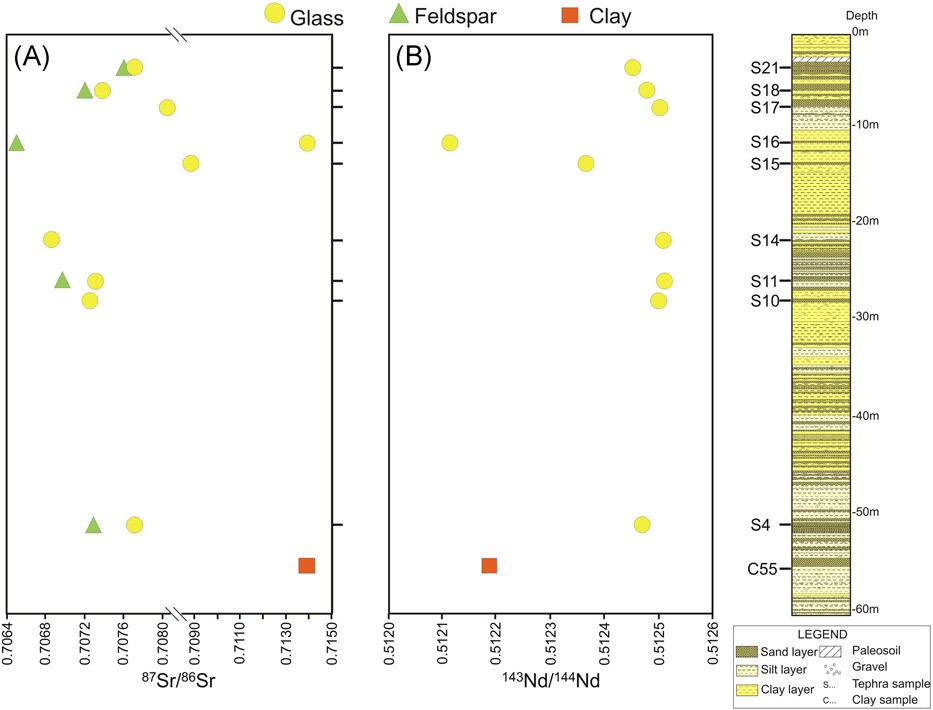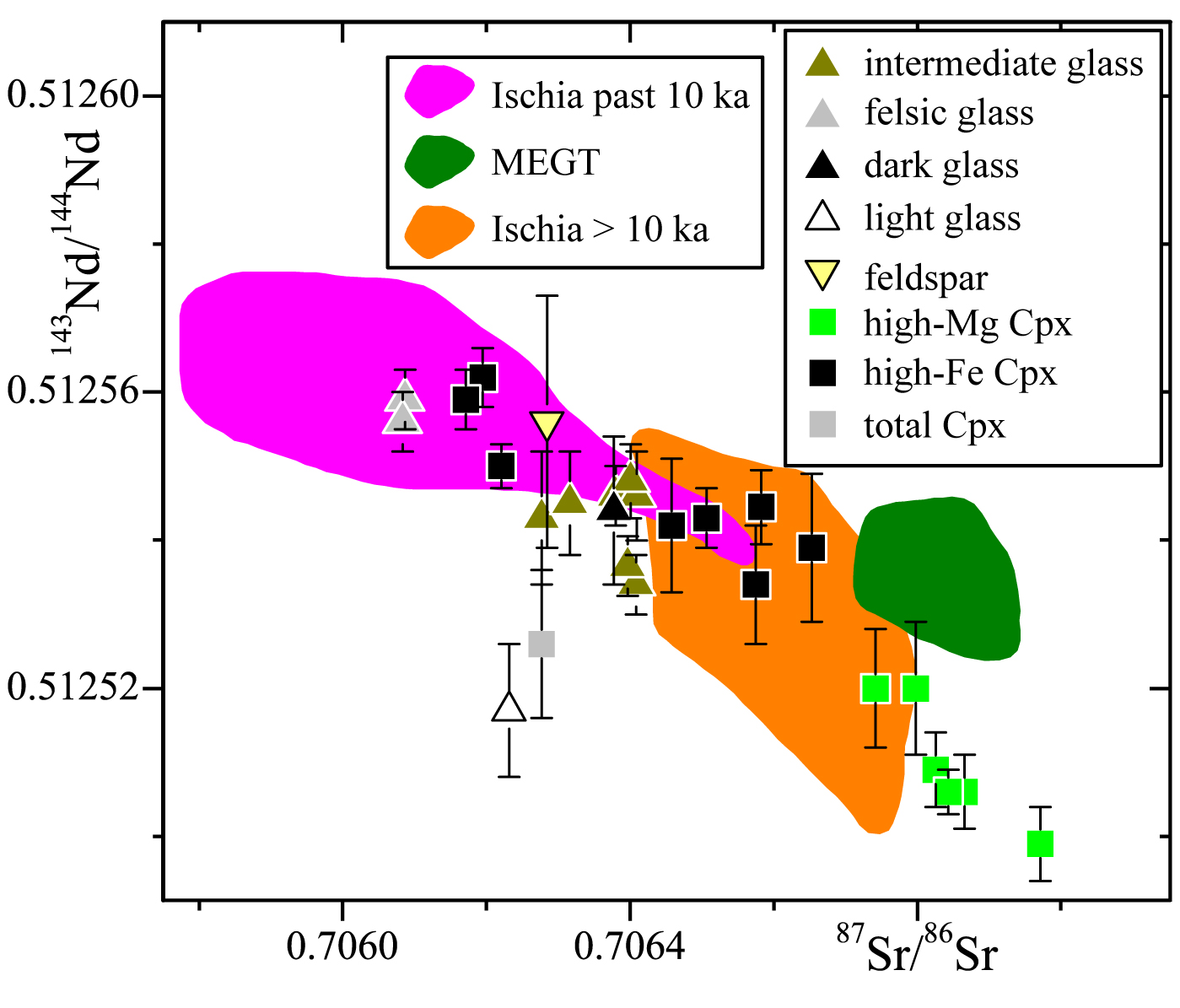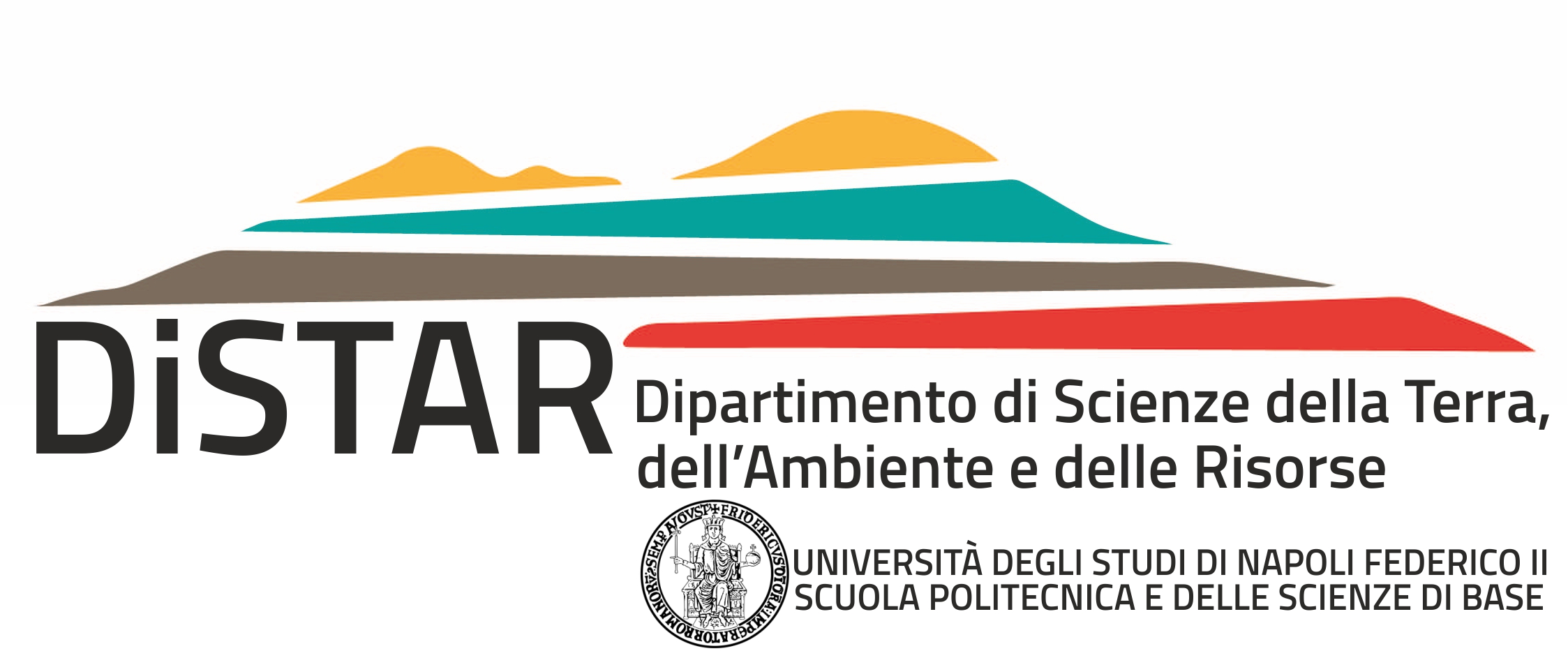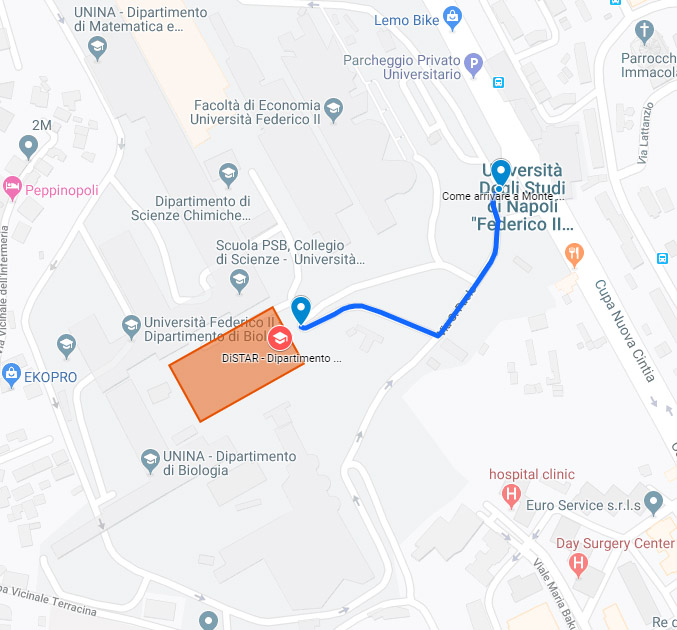Isotope Geochemistry
Prof. Massimo D’Antonio
Prof. Paola Petrosino
Prof. Vincenzo Morra
Prof. Leone Melluso
Dr. Ciro Cucciniello
Dr. Lorenzo Fedele
Dr. Valeria Di Renzo, PhD – ARPAC, Napoli
Dr. Meritxell Aulinas Junca, Universitat de Barcelona, Barcellona, Spagna
Collaborators (non permanent)
Dr. Gianluca Cirillo, dottorando – DiSTAR
Dr. Carlo Pelullo, dottorando – DiSTAR
Dr. Bruna Saar de Almeida, dottoranda – DiSTAR
Dr. Federica Totaro, dottoranda – DiSTAR
Dr. Raffaella S. Iovine, PhD – GZG, Göttingen, Germania
Chemostratigrafia isotopica di campioni di tefra distali rinvenuti in un carotaggio effettuato nel bacino lacustre di San Gregorio Magno (prov. di Salerno).
La Geochimica Isotopica è il ramo della scienza che utilizza la composizione isotopica degli elementi chimici naturali per eseguire datazioni assolute di campioni di materiali geologici oppure come tracciante di processi geologici.
La Geochimica degli Isotopi Radiogenici utilizza elementi chimici generalmente ad alto numero atomico, quali lo stronzio, il neodimio e il piombo. La composizione isotopica di questi elementi chimici varia in seguito alla loro permanenza più o meno lunga in “serbatoi” della Terra, ossia porzioni diverse di mantello o di crosta. Durante tale permanenza, l’isotopo radiogenico di un elemento chimico aumenta per effetto del decadimento radioattivo di un altro elemento chimico genitore. Per esempio, lo 87Sr aumenta nel tempo a causa del decadimento radioattivo del 87Rb.
La Geochimica degli Isotopi Stabili utilizza il frazionamento tra gli isotopi di un elemento chimico generalmente a basso numero atomico, quali l’idrogeno, il boro, l’ossigeno, l’azoto e lo zolfo. Il frazionamento isotopico consiste nell’arricchimento di un isotopo più leggero rispetto a uno più pesante, o viceversa, di un dato elemento chimico nel corso di processi naturali, quali: trasformazione di minerali durante un evento metamorfico; precipitazione di minerali di neoformazione nella diagenesi o nella pedogenesi; evaporazione e condensazione di acqua; produzione di materia organica tramite fotosintesi o chemosintesi; evoluzione magmatica a sistema aperto.
 Isotopic chemostratigraphy of tephra samples collected from a drill-hole carried out in the San Gregorio Magno lacustrine basin (near Salerno, Southern Italy).
Isotopic chemostratigraphy of tephra samples collected from a drill-hole carried out in the San Gregorio Magno lacustrine basin (near Salerno, Southern Italy).
Isotope Geochemistry is the branch of knowledge that uses the isotopic composition of naturally occurring chemical elements to either perform absolute dating of geological material samples or trace geological processes.
The Radiogenic Isotope Geochemistry utilizes chemical elements generally having high atomic number, such as strontium, neodymium and lead. The isotopic composition of such elements varies as a consequence of their longer or shorter persistence in a “reservoir” of the Earth, that can be a portion of the mantle or crust. During such a permanence time, the radiogenic isotope of an element growths because of the radioactive decay of another, parent chemical element. For instance, 87Sr increases with time as a consequence of the radioactive decay of 87Rb.
The Stable Isotope Geochemistry utilizes the fractionation among the isotopes of a chemical element generally having low atomic number, such as hydrogen, boron, oxygen, nitrogen and sulphur. The isotopic fractionation consists in enrichment of a lighter isotope relative to a heavier isotope, and vice versa, of a chemical element, in the course of natural processes, such as: transformation of minerals during a metamorphic event; precipitation of secondary minerals during diagenesis or pedogenesis; water evaporation or condensation; organic matter generation through photosynthesis of chemosynthesis; open-system magmatic evolution.
Isotope Geochemistry provides efficient tools for investigating several geological processes, such as: assimilation of crustal rocks by a crystallizing magma; mixing among distinct magma batches; mixing among water masses of variable provenance; mixing among clasts of variable composition in a sedimentary basin. In volcanology, 87Sr/86Sr, 143Nd/144Nd, 206Pb/204Pb and d11B values allow drawing of isotope chemostratigraphies for the reconstruction, in conjunction with the variation of other geochemical parameters, of the evolution through time of the magmatic feeding system of a volcano, even during a single eruption. In petrology, the isotopic tracers, combined with trace element contents and ratios, allow quantitative modelling of magma source regions, as well as genesis and evolution processes of magmas in different geodynamic settings on Earth. Combining radiogenic and stable isotopes (see figure) allows discriminating between mantle source enrichment processes involving sedimentary components, from crustal contamination processes. Moreover, stable isotopes allow estimating the equilibrium temperature of magmatic, metamorphic and metallogenic processes.
Lastly, the isotopes of several metals allow tracing the effects of anthropogenic activities on both environment and man, such as: groundwater and soil pollution by industrial or agriculture wastewaters; soil pollution by aerosols containing tetraethyl lead from gasoline; pollution of human tissues by toxic metals, such as Pb, Cr and Cd. In the agro-food sector, radiogenic isotopes are employed since a few years as tracers for relating several food and beverages (cheeses, vegetables, wine, oil) to the territory where raw materials are produced, in order to shed light on possible food fraud







